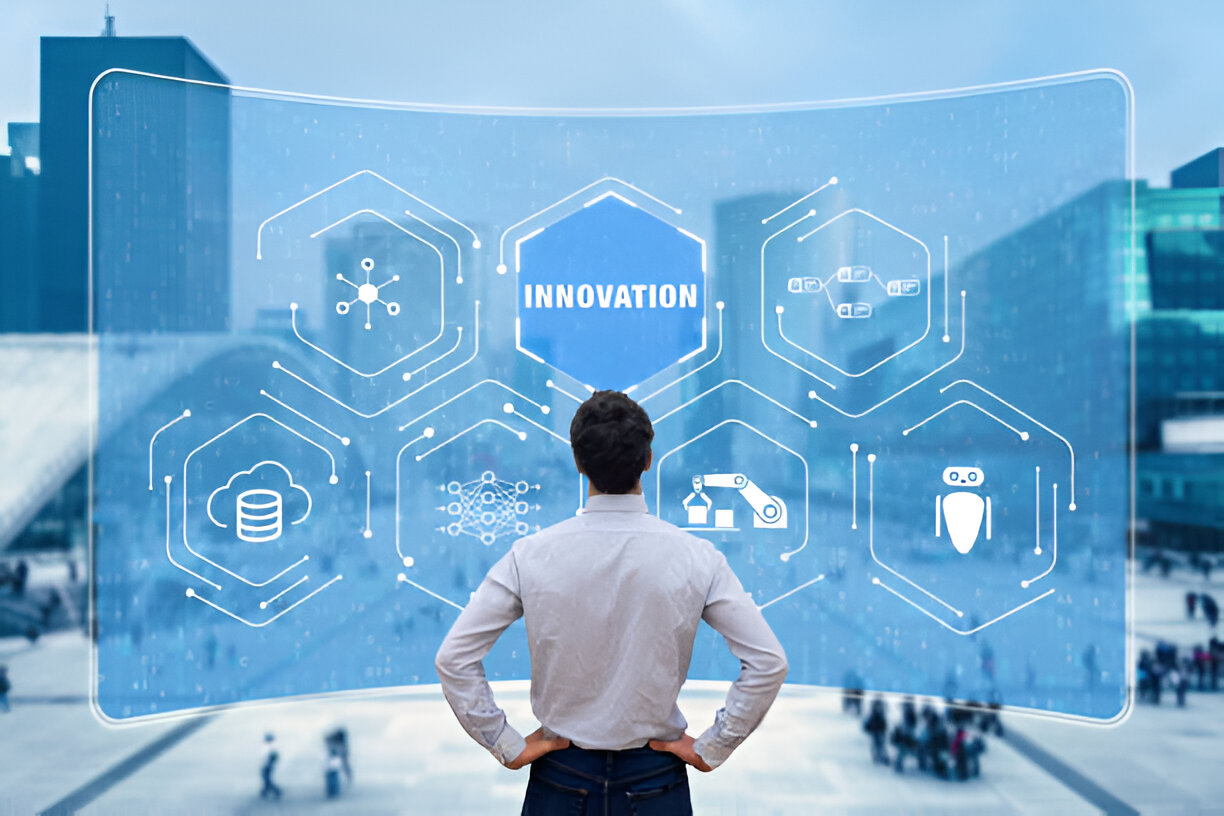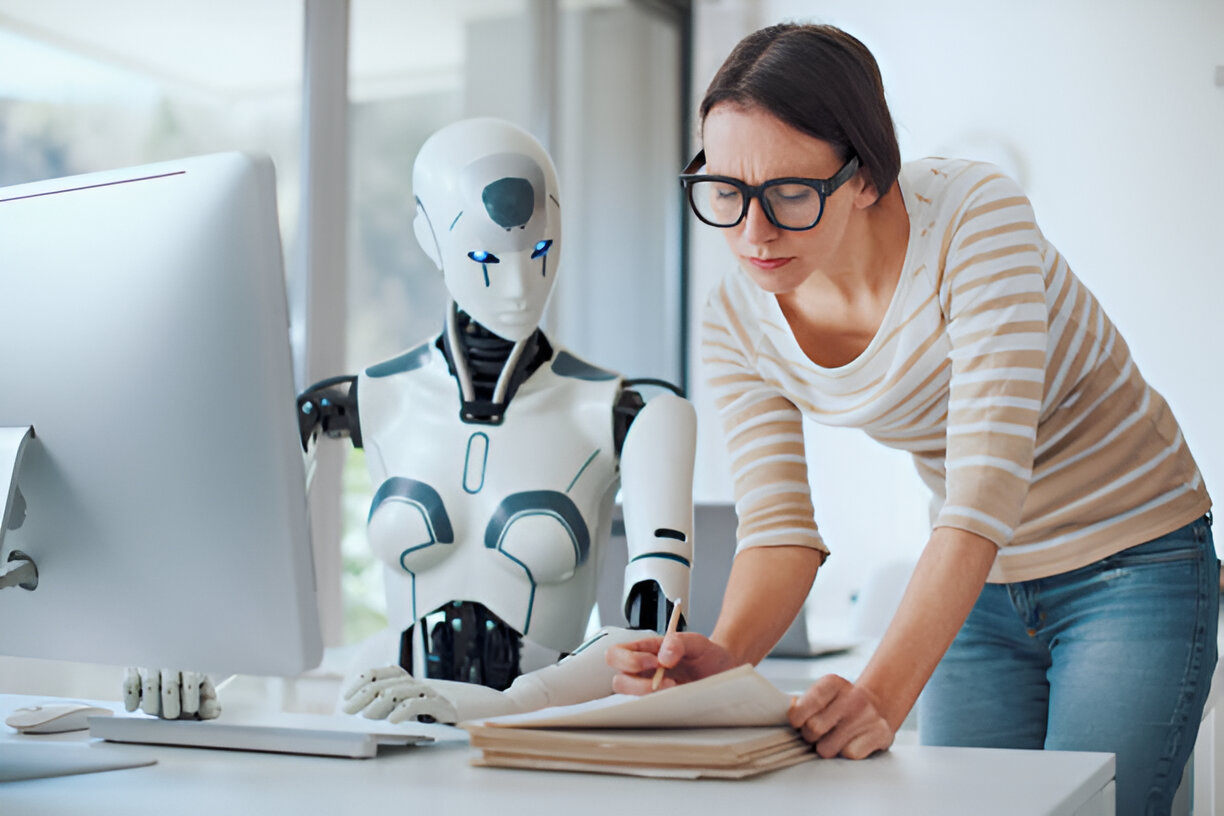How to Explain AI to a Non-Technical Audience: Remember that weird suggestion your phone gave you for a song you just casually mentioned? Or how your ride-hailing app seems to know exactly how long it’ll take you to get home? That, my friend, is the magic of Artificial Intelligence (AI) at work – even if it feels a bit like futuristic technobabble sometimes. But fear not, knowledge seeker! This guide is here to break down AI into bite-sized pieces, making it easier for you to understand this powerful technology that’s rapidly changing our world.
Think of AI as a super-powered learning machine. It can analyze massive amounts of data, identify patterns, and even make predictions – kind of like how you get better at a game the more you play it. The goal of this guide? To equip you with the knowledge to navigate the exciting (and sometimes confusing!) world of AI. By the end, you’ll be able to explain AI to your friends, understand its impact on society, and maybe even see how it can be used for good in your own life. So, buckle up and get ready to unlock the mysteries of AI!
What is Artificial Intelligence (AI)?
Forget robots taking over the world (phew!). AI isn’t some sentient being straight out of a sci-fi movie. In simpler terms, it’s a branch of computer science focused on creating intelligent machines that can mimic human capabilities. Imagine a computer program that can learn and improve over time, like a super-smart student constantly absorbing new information. That’s the basic idea behind AI.

There are different types of AI, but let’s not get bogged down in the details for now. Think of it like learning different styles of music – some AI excels at recognizing patterns in data (like that song recommendation!), while others focus on making decisions based on what they’ve learned (like your ride-hailing app predicting traffic). The key takeaway: AI is all about creating intelligent systems that can learn and adapt.
How Does AI Work?
So, how does this super-powered learning machine actually work? AI relies on a fascinating process called machine learning. Imagine you’re training a friend to play chess. You show them different moves, explain strategies, and maybe even let them lose a few games to learn from their mistakes (sorry, friend!). That’s kind of similar to how machine learning works.
Here’s the breakdown:
- Data, glorious data: AI systems are fueled by information. It could be anything from pictures and text to sounds and even your past purchases online (don’t worry, that data is usually anonymized!). The more data an AI system has, the better it learns and performs.
- Identifying patterns: Remember how you learned chess patterns from your friend? AI systems do the same thing, but on a much larger scale. They analyze the data they’re given, searching for patterns and connections. This could involve recognizing faces in photos, predicting traffic flow based on historical data, or even generating creative text formats (like this very guide… maybe someday!).
- Making predictions: Once AI systems identify patterns, they can use that knowledge to make predictions. This can be anything from suggesting the next song you’ll like to recommending a product you might be interested in. It’s all about using the learned patterns to anticipate what might happen next.
Think of it like this: the data is the food, the AI system is the chef, and the patterns are the delicious recipes. By analyzing the “ingredients” (data), the AI “chef” learns to cook up some pretty impressive predictions (the “recipes”). It’s not magic, it’s just clever technology at work!
Here’s the kicker: There are different types of machine learning, but we don’t need to dive too deep right now. The main point is that AI uses data and machine learning to mimic human intelligence and tackle complex problems – all without needing a brain break or a caffeine fix!

Real-World Applications of AI
AI isn’t just some futuristic concept locked away in a lab. It’s actually all around us, quietly transforming the world in some pretty amazing ways. Let’s take a peek at how AI is making waves in different industries:
- Healthcare Hero: AI is helping doctors diagnose diseases more accurately, analyze medical images faster, and even develop personalized treatment plans. Imagine an AI system that can spot a potential illness in an X-ray before a human doctor can! Pretty cool, right?
- Entertainment Extraordinaire: From the special effects in your favorite movies to the music recommendations on your streaming service, AI is playing a big role in the entertainment industry. Ever wonder how those movie fight scenes look so real? Thank AI for helping create those mind-blowing visuals!
- Business Booster: Businesses are using AI to streamline operations, improve customer service, and even develop new products. For example, some online stores use AI-powered chatbots to answer customer questions 24/7, making shopping more convenient than ever.
- Everyday Enhancer: AI is embedded in many of the devices we use daily. Your smartphone’s facial recognition unlock? That’s AI at work. The smart assistant reminding you about your dentist appointment? Yep, you guessed it – AI again!
These are just a few examples, and the possibilities are endless. As AI continues to evolve, we can expect to see it revolutionize even more aspects of our lives. Who knows, maybe AI will even help us write the next big hit song (although hopefully it won’t replace human creativity entirely – music festivals wouldn’t be the same without the mosh pits!).
Benefits and Challenges of AI
AI is like a double-edged sword – it has the potential to do amazing things, but there are also some challenges to consider. Let’s explore both sides of the coin:
Benefits of AI:
- Efficiency on steroids: AI can automate repetitive tasks and analyze data much faster than humans, leading to increased efficiency across various industries. Imagine hospitals processing medical claims in seconds instead of weeks!
- Innovation at its finest: AI can help us develop new technologies and solve complex problems that might stump even the brightest human minds. Who knows, maybe AI will help us discover new ways to combat climate change or explore the universe!
- Personalized experiences: AI can tailor experiences to our individual needs and preferences. From suggesting movies you’ll love to recommending products you might actually use, AI can make our lives more convenient and enjoyable.
Challenges of AI:
- Job displacement concerns: As AI automates tasks, some jobs might become obsolete. This raises concerns about job security and the need for retraining programs to equip people with skills relevant in the AI age.
- Ethical considerations: AI algorithms can perpetuate biases if trained on biased data. It’s important to ensure AI is developed and used ethically, without discrimination or prejudice.
- Explainability issues: Sometimes, it’s difficult to understand how AI systems reach certain conclusions. This can be a problem in areas like healthcare, where transparency and trust are crucial.
Despite these challenges, the potential benefits of AI are undeniable. The key is to develop and use AI responsibly, ensuring it works for the greater good of humanity. It’s a balancing act, but with careful planning and ethical considerations, AI can be a powerful tool for progress.

The Future of AI: What to Expect
The future of AI is brimming with exciting possibilities! Here are some trends to keep an eye on:
- Rise of Explainable AI (XAI): Researchers are developing ways to make AI systems more transparent, allowing us to understand how they reach decisions. This will be crucial for building trust in AI, especially in sensitive fields like healthcare and finance.
- AI for Good: There’s a growing focus on using AI to tackle global challenges like climate change, poverty, and disease. Imagine AI systems optimizing energy usage to reduce our carbon footprint or helping researchers develop new cures for illnesses!
- Human-AI Collaboration: The future is likely to be one of humans and AI working together. AI can handle the heavy lifting of data analysis and automation, while humans can provide creativity, critical thinking, and the ethical compass to guide AI development.
The important takeaway? AI isn’t here to replace us – it’s here to partner with us. By harnessing the power of AI responsibly, we can build a brighter future for generations to come. So, don’t be afraid of AI – embrace it as a tool to learn, create, and make the world a better place!
FAQs: Your AI Questions Answered
Is AI dangerous?
While AI has the potential for misuse, safety is a top priority in its development. Responsible AI development focuses on preventing harm and ensuring AI systems are used ethically. Think of it like any powerful tool – a hammer can build a house or break a window, depending on how you use it. The key is to use AI responsibly for good.
Will AI take my job?
It’s true that AI automation might change the job landscape. Some routine jobs might become obsolete, but AI is also creating new opportunities in fields like AI development, data analysis, and cybersecurity. The important thing is to stay adaptable and develop skills that complement AI, such as creativity, critical thinking, and problem-solving.
How can I use AI in my business?
There are many ways businesses can leverage AI! Here are a few ideas:
- Improve customer service: Use AI-powered chatbots to answer customer questions 24/7.
- Personalize marketing campaigns: AI can analyze customer data to tailor marketing messages for better results.
- Optimize operations: Use AI to streamline processes and improve efficiency.
What are the limitations of AI?
While AI is powerful, it still has limitations. For example, some AI systems struggle with tasks requiring common sense or creativity. Additionally, AI algorithms can perpetuate biases if trained on biased data. It’s important to be aware of these limitations and develop AI responsibly.
Can AI be creative?
AI can be used for creative tasks in certain aspects. For instance, AI can generate music or write different creative text formats. However, true creativity often involves human qualities like emotional intelligence and understanding context – areas where AI is still under development. The future might see AI and humans collaborating on creative projects, with AI handling the technical aspects and humans providing the creative spark.
Conclusion
So, there you have it! You’ve officially unlocked the mysteries of AI – well, at least the basics. Remember, AI is a rapidly evolving field, but hopefully, this guide has equipped you with the knowledge to navigate the exciting (and sometimes mind-boggling) world of Artificial Intelligence.
Feeling curious to learn more? There are tons of online resources and courses available to delve deeper into AI. Who knows, maybe you’ll be the next innovator shaping the future of AI! The possibilities are endless, just like the potential of AI itself. Let’s embrace AI as a tool for progress and use it to create a brighter future for all.











